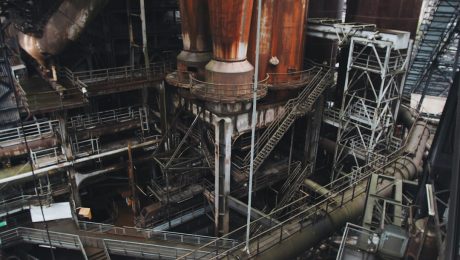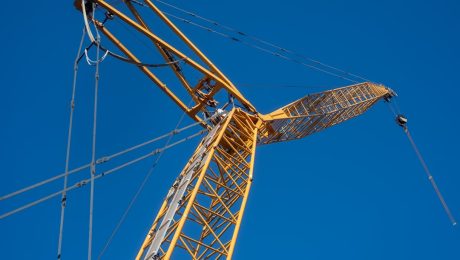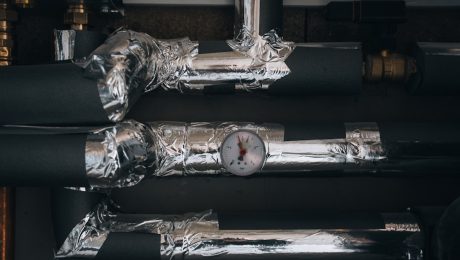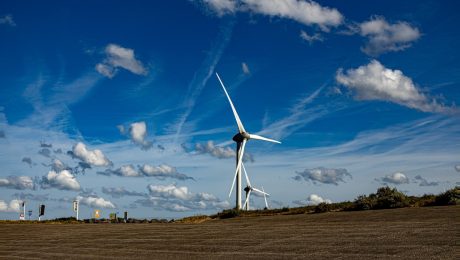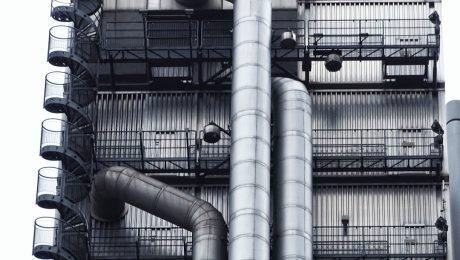The production of high-quality steel is a complex process demanding rigorous quality control at every stage. From raw material selection to the final product, meticulous monitoring and testing are crucial to ensure the steel meets the required specifications and performs reliably in its intended application. This guide delves into the various methods employed to maintain and enhance steel quality control, ensuring the integrity and performance of this vital material.
1. Chemical Composition Analysis: The Foundation of Steel Quality
The chemical composition of steel directly influences its properties. Variations in the percentages of elements like carbon, manganese, silicon, phosphorus, sulfur, and alloying additions (chromium, nickel, molybdenum, etc.) significantly affect strength, hardness, ductility, weldability, and corrosion resistance. Therefore, precise chemical analysis is paramount. Several techniques are employed:
- Spectroscopy (OES): Optical Emission Spectroscopy is a rapid and accurate method for determining the elemental composition. A sample is excited, and the emitted light is analyzed to identify and quantify the elements present.
- Inductively Coupled Plasma Atomic Emission Spectrometry (ICP-AES): This technique offers high sensitivity and accuracy, particularly for trace elements. It’s ideal for detecting even minute impurities that can affect steel properties.
- Wet Chemical Analysis: Traditional methods like titration and gravimetric analysis are still used, particularly for verification and in situations where other methods might be unavailable. These methods provide precise results but are more time-consuming.
Regular chemical analysis throughout the steelmaking process ensures that the composition remains within the specified tolerances, preventing defects and ensuring consistent quality.
2. Mechanical Testing: Evaluating Steel’s Physical Properties
Chemical composition alone doesn’t fully define steel’s performance. Mechanical testing provides crucial insights into its physical properties, including strength, ductility, hardness, and toughness. Common mechanical tests include:
- Tensile Testing: This determines the ultimate tensile strength, yield strength, elongation, and reduction in area. It reveals the steel’s ability to withstand tensile forces before failure.
- Hardness Testing: Methods like Rockwell, Brinell, and Vickers hardness testing measure the resistance of the steel to indentation. Hardness is a good indicator of strength and wear resistance.
- Impact Testing (Charpy or Izod): These tests assess the steel’s ability to absorb energy upon impact, revealing its toughness and resistance to brittle fracture, particularly at low temperatures.
- Fatigue Testing: This evaluates the steel’s resistance to failure under cyclic loading, crucial for applications experiencing repeated stress.
Mechanical testing verifies that the steel meets the required strength and toughness levels for its intended application, ensuring its reliability and safety.
3. Non-Destructive Testing (NDT): Ensuring Internal Integrity
NDT methods allow for the inspection of steel components without causing damage. These techniques are vital for detecting internal flaws like cracks, voids, and inclusions that might compromise the steel’s integrity. Common NDT methods used in steel quality control include:
- Ultrasonic Testing (UT): High-frequency sound waves are used to detect internal flaws by analyzing the reflection and transmission of the waves.
- Radiographic Testing (RT): X-rays or gamma rays penetrate the steel, revealing internal flaws by analyzing differences in density and absorption.
- Magnetic Particle Testing (MT): This method is used to detect surface and near-surface cracks in ferromagnetic materials. Magnetic particles are applied to the surface, and flaws disrupt the magnetic field, causing the particles to accumulate at the defect location.
- Liquid Penetrant Testing (PT): This technique is used to detect surface-breaking flaws. A penetrant is applied to the surface, and excess penetrant is removed. A developer then draws the penetrant out of the flaw, making it visible.
NDT ensures that the steel components are free from critical defects, enhancing their safety and reliability in service.
4. Microstructural Analysis: Unveiling the Steel’s Internal Structure
The microstructure of steel, the arrangement of its constituent phases (ferrite, pearlite, martensite, etc.), significantly impacts its properties. Microstructural analysis involves examining a polished and etched sample under a microscope to determine the grain size, phase distribution, and presence of any undesirable constituents. This analysis provides valuable insights into the steel’s processing history and helps explain its mechanical properties. Techniques like optical microscopy, scanning electron microscopy (SEM), and transmission electron microscopy (TEM) are employed.
Understanding the microstructure allows for better control over the steelmaking process and helps in predicting the steel’s performance characteristics.
5. Traceability and Documentation: Maintaining a Complete Audit Trail
Maintaining comprehensive records throughout the entire steel production process is crucial for traceability and quality assurance. This involves documenting every step, from raw material sourcing and chemical analysis to mechanical testing and NDT results. A robust traceability system allows for the identification and investigation of any quality issues, facilitating corrective actions and preventing recurrence. This detailed documentation is essential for meeting industry standards and regulatory requirements.
Effective traceability and documentation are vital for maintaining high quality standards and building customer confidence.
By implementing these comprehensive quality control methods, steel manufacturers can ensure the production of high-quality steel that meets the stringent demands of diverse applications. Continuous improvement and adaptation of these techniques are essential for staying at the forefront of steel production excellence.
SEO Tags:
- Steel Quality Control
- Steel Testing Methods
- Non-Destructive Testing Steel
- Steel Chemical Analysis
- Mechanical Properties of Steel
body { font-family: sans-serif; line-height: 1.6; }
h1, h2, h3 { color: #333; }
img { max-width: 100%; height: auto; }
High-strength steel (HSS) profiles, particularly HEA profiles (wide flange beams with parallel flanges), are essential components in the construction of heavy load structures like bridges, high-rise buildings, and industrial facilities. Understanding their properties, design considerations, and limitations is crucial for ensuring structural integrity and safety. This comprehensive guide delves into the key aspects of utilizing HEA profiles for such demanding applications.
Understanding HEA Profile Properties and Specifications
HEA profiles are characterized by their robust design, featuring parallel flanges and a web connecting them. The “HEA” designation refers to a standardized European profile classification, with the numerical value indicating the nominal height of the section in centimeters. For example, an HEA 300 profile has a nominal height of 300mm. Key properties to consider include:
- Section Modulus (Zx and Zy): Represents the resistance to bending about the x-axis (strong axis) and y-axis (weak axis). Higher section modulus indicates greater bending capacity.
- Moment of Inertia (Ix and Iy): Measures the resistance to bending and stiffness. Higher values mean greater resistance to deflection.
- Area (A): The cross-sectional area of the profile, directly related to its weight and tensile strength.
- Yield Strength (fy): The stress at which the steel begins to deform plastically. Higher yield strength indicates greater load-bearing capacity.
- Material Grade: HEA profiles are available in various steel grades (e.g., S275, S355, S460) each possessing different yield strengths. The choice depends on the specific load requirements and design codes.
Consulting relevant steel manufacturer’s datasheets is crucial to obtain precise specifications for each HEA profile.
Design Considerations for Heavy Load Applications
Designing structures using HEA profiles for heavy loads requires careful consideration of several factors:
- Load Calculations: Accurate determination of dead loads (self-weight of the structure), live loads (occupancy, equipment), and environmental loads (wind, snow, seismic) is paramount. This involves detailed structural analysis using appropriate software and methods.
- Stability and Buckling: Slender HEA profiles are susceptible to buckling under compressive loads. Design must address this risk through appropriate bracing, stiffeners, or selecting a more robust section with a higher section modulus and moment of inertia.
- Shear Capacity: The ability of the web to resist shear stresses should be checked. Web stiffeners might be needed for high shear loads.
- Connection Design: The design of connections (welds, bolts) is crucial for transferring loads effectively. Connection strength must be sufficient to avoid failure before the HEA profile itself yields.
- Fatigue Considerations: For structures subjected to cyclic loading, fatigue analysis is necessary to ensure that the HEA profiles can withstand repeated stress cycles without failure.
- Corrosion Protection: Appropriate corrosion protection measures (e.g., galvanizing, painting) are essential to prolong the lifespan of the structure in harsh environments.
Material Selection: Choosing the Right Steel Grade for HEA Profiles
The choice of steel grade significantly impacts the structural performance and cost-effectiveness of the design. Higher-strength steels (like S355 or S460) offer greater load-bearing capacity, allowing for lighter and potentially more economical designs. However, they may be more expensive and require specialized welding techniques. Factors influencing steel grade selection include:
- Load Requirements: The magnitude and type of loads dictate the minimum required yield strength.
- Cost Considerations: Balancing the cost of the steel with the overall structural cost.
- Weldability: Higher-strength steels often have stricter welding requirements.
- Fabrication Constraints: Availability and ease of fabrication of the chosen steel grade.
- Local Building Codes and Standards: Compliance with relevant codes and regulations is mandatory.
Advanced Analysis Techniques for Optimized Design
While basic hand calculations can be employed for simpler designs, complex heavy load structures often necessitate advanced analysis techniques. Finite element analysis (FEA) is a powerful tool that allows for detailed stress analysis, considering complex geometries, loading conditions, and material properties. FEA can help optimize the design, minimizing material usage while ensuring structural integrity. Other advanced techniques include:
- Nonlinear Analysis: Accounts for material nonlinearity (plastic behavior) and geometric nonlinearity (large deformations).
- Dynamic Analysis: Essential for structures subjected to dynamic loads (e.g., earthquakes, blasts).
- Fatigue Analysis: Predicts the lifespan of the structure under cyclic loading.
Best Practices and Quality Control in HEA Profile Implementation
Implementing HEA profiles effectively requires adherence to best practices throughout the entire process:
- Accurate Fabrication: Precise fabrication of the HEA profiles and their connections is crucial to ensure proper load transfer.
- Rigorous Quality Control: Regular inspections and quality control measures throughout the construction process are vital for detecting and rectifying any defects early.
- Proper Welding Techniques: Qualified welders and appropriate welding procedures are essential, especially for high-strength steels.
- Compliance with Standards: Adherence to relevant international and national standards (e.g., Eurocodes, AISC) is mandatory.
- Regular Maintenance: Periodic inspection and maintenance are necessary to detect and address any potential issues that may arise over the lifespan of the structure.
By carefully considering these aspects, engineers can effectively utilize HEA profiles to construct robust and reliable heavy load structures that meet the demands of modern engineering challenges.
Tags: HEA profiles, heavy load structures, high-strength steel, structural engineering, steel design
Steel, the backbone of modern infrastructure and countless industries, relies on a complex network of raw material sources. Understanding these sources is crucial to comprehending the steelmaking process, its economic implications, and the environmental considerations involved. This comprehensive guide delves into the key ingredients that go into producing this vital material.
1. Iron Ore: The Foundation of Steel
Iron ore, the primary raw material in steel production, is a rock or sediment that contains significant amounts of iron oxides. Different types of iron ore exist, each with varying iron content and processing requirements. Hematite (Fe₂O₃) and magnetite (Fe₃O₄) are the most common and commercially important types. These ores are extracted through various mining methods, including open-pit mining and underground mining, depending on the ore body’s geology and depth. The extraction process often involves significant earthmoving and can have a considerable environmental impact, necessitating careful land reclamation and responsible mining practices. After extraction, the ore undergoes beneficiation, a process that involves crushing, grinding, and concentrating the iron content to increase its purity and efficiency in the steelmaking process. This often includes techniques like magnetic separation or froth flotation.
2. Coal: The Fueling Force Behind Steel Production
Coal plays a critical role in steel production, primarily as a fuel in the blast furnace process. It provides the heat necessary to reduce iron oxides in iron ore to metallic iron. While the use of coal is gradually decreasing due to environmental concerns and the rise of alternative technologies, it remains a significant component in many steelmaking processes, particularly in the integrated steel mills. Different types of coal, varying in their carbon content and calorific value, are used based on the specific requirements of the steelmaking process. The extraction of coal, similar to iron ore, often involves large-scale mining operations with associated environmental impacts, including greenhouse gas emissions, land degradation, and water pollution. Sustainable coal mining practices are increasingly important to mitigate these negative effects.
3. Scrap Metal: A Sustainable Steelmaking Ingredient
Scrap metal, encompassing steel and iron from various sources such as discarded vehicles, construction debris, and industrial byproducts, is a crucial secondary raw material in steel production. Recycling scrap metal significantly reduces the need for virgin iron ore and coal, thereby decreasing the environmental footprint of steelmaking. Electric arc furnaces (EAFs), a prominent steelmaking technology, primarily utilize scrap metal as their main raw material. The use of scrap metal contributes to a more sustainable and circular economy, reducing reliance on raw material extraction and minimizing waste. Efficient scrap metal collection, sorting, and processing are essential for effective utilization in the steelmaking process. The quality and composition of scrap metal are carefully monitored to ensure it meets the required specifications for different steel grades.
4. Fluxing Materials: Ensuring Efficient Steelmaking
Fluxing materials, such as limestone and dolomite, are added to the blast furnace and other steelmaking processes to control the chemical composition of the molten metal and slag. Limestone, primarily calcium carbonate, reacts with impurities in the iron ore, such as silica, forming slag, which is a molten waste product that is separated from the molten iron. Dolomite, a mixture of calcium and magnesium carbonates, performs a similar function, further refining the molten iron and improving the efficiency of the steelmaking process. The selection of fluxing materials depends on the specific composition of the iron ore and the desired properties of the final steel product. The sourcing and processing of these materials also require consideration of environmental impacts, particularly regarding waste management and potential air pollution during the calcination process.
5. Other Additives and Alloying Elements: Tailoring Steel Properties
Beyond the primary raw materials, various additives and alloying elements are incorporated into steel to modify its properties and achieve specific characteristics. These include elements like manganese, chromium, nickel, molybdenum, and vanadium. Manganese enhances the steel’s strength and hardness, while chromium improves its corrosion resistance (stainless steel). Nickel increases its toughness and ductility, and molybdenum contributes to its high-temperature strength. These alloying elements are sourced from various mines and refined to high purity before being added to the molten steel. The precise amounts and types of alloying elements are carefully controlled to achieve the desired properties for different steel applications, from construction to automotive manufacturing to aerospace components. The responsible sourcing of these elements is crucial, considering potential environmental and social impacts associated with their extraction and processing.
The steel industry’s reliance on a diverse range of raw materials highlights the complexity of its supply chain and the interconnectedness of various sectors. Sustainable sourcing practices, efficient processing techniques, and innovative technologies are essential for ensuring a secure and environmentally responsible future for steel production.
SEO-Friendly Tags:
- Steel Raw Materials
- Iron Ore Mining
- Steel Production Process
- Scrap Metal Recycling
- Steelmaking Ingredients
Hot rolled flat bars are a fundamental component in numerous industries, from construction and automotive to manufacturing and agriculture. Understanding their properties and applications is crucial for selecting the right material for any given project. This comprehensive guide will delve into the intricacies of hot rolled flat bars, providing a detailed explanation for engineers, manufacturers, and anyone interested in learning more about this versatile steel product.
The Hot Rolling Process: From Ingot to Flat Bar
The journey of a hot rolled flat bar begins with a steel ingot, a large block of solidified steel. This ingot is then heated to incredibly high temperatures, typically between 1100°C and 1250°C (2012°F and 2282°F), making it malleable and easy to shape. This heated ingot is then passed through a series of rollers, progressively reducing its thickness and shaping it into a flat bar. The high temperature allows for significant deformation without fracturing the material. The process is continuous, with the bar passing through multiple stands of rollers until the desired dimensions are achieved. This continuous process contributes to high production rates and cost-effectiveness.
The high temperature also allows for the removal of internal stresses within the steel, leading to a more uniform and stable final product. This process, however, results in a slightly rougher surface finish compared to cold-rolled flat bars. The scale formation – an oxide layer – on the surface during hot rolling is a characteristic feature that often requires further processing, like pickling, for improved surface quality.
Mechanical Properties and Characteristics
Hot rolled flat bars exhibit specific mechanical properties that make them suitable for various applications. Their tensile strength, yield strength, and elongation are significantly influenced by the steel grade and the rolling process itself. Generally, hot-rolled steel possesses good ductility, meaning it can be bent and formed without breaking. This makes it ideal for applications requiring bending, forging, or welding. The high temperature during rolling also affects the grain structure of the steel, resulting in a larger grain size compared to cold-rolled steel. This larger grain size contributes to greater toughness and impact resistance but may slightly reduce its strength and hardness.
The exact mechanical properties are specified by the grade of steel used. Common grades include mild steel, low-carbon steel, medium-carbon steel, and high-carbon steel, each offering a different balance of strength, ductility, and hardness.
Common Applications of Hot Rolled Flat Bars
The versatility of hot rolled flat bars leads to a wide range of applications across various industries. In the construction industry, they are commonly used as structural members in buildings, bridges, and other infrastructure projects. Their strength and weldability make them ideal for creating beams, columns, and other load-bearing components. In the automotive industry, they are used in chassis components, suspension systems, and other structural parts. The manufacturing industry utilizes hot rolled flat bars to create various components for machinery, equipment, and tools.
Other applications include: agricultural equipment, railway components, shipbuilding, and even artistic creations. The ability to easily weld, machine, and form these bars makes them a cost-effective choice for a multitude of purposes.
Advantages and Disadvantages of Hot Rolled Flat Bars
Compared to cold-rolled flat bars, hot-rolled options offer several advantages. Firstly, the high-temperature rolling process makes them significantly more cost-effective to produce. Secondly, their superior ductility and toughness make them ideal for applications involving significant deformation or impact loads. Finally, the larger grain size contributes to higher impact resistance, making them suitable for applications experiencing shock or vibration.
However, hot-rolled flat bars also have disadvantages. Their surface finish is generally rougher than cold-rolled steel, requiring further processing for applications demanding a smooth surface. Their dimensional accuracy might be slightly lower, and their strength and hardness are generally less compared to cold-rolled steel of the same grade.
Selecting the Right Hot Rolled Flat Bar: Factors to Consider
Choosing the appropriate hot rolled flat bar requires careful consideration of several factors. The primary factor is the intended application and the required mechanical properties. The steel grade, specified by its chemical composition, determines the strength, ductility, and weldability of the bar. The dimensions, including thickness and width, must also be carefully selected to meet the design requirements. Other considerations include the desired surface finish, tolerance requirements, and cost constraints. Consulting with a materials engineer or supplier is highly recommended for complex projects to ensure the selection of the most suitable material for optimal performance and cost-effectiveness.
Understanding the nuances of hot-rolled flat bars is crucial for making informed decisions in material selection. By considering the factors discussed above, you can ensure that the chosen material meets the specific demands of your project, leading to optimal performance and a successful outcome.
Tags: hot rolled flat bar, steel bar, flat steel bar, hot rolling process, steel properties
Electric Resistance Welded (ERW) pipes are a ubiquitous presence in various industries, owing to their cost-effectiveness and versatility. This comprehensive guide delves into the intricacies of ERW pipes, exploring their manufacturing process, properties, diverse applications, and key considerations.
The ERW Pipe Manufacturing Process: A Step-by-Step Look
The creation of an ERW pipe begins with a continuous strip of steel coil. This coil is then formed into a cylindrical shape, using a series of rollers. The edges of the steel strip are carefully aligned and brought together. The crucial step involves the application of electric resistance welding. High current is passed through the edges, heating them to a point where they fuse together, forming a continuous weld. This weld is then subjected to various quality control checks, including ultrasonic testing to ensure its integrity. Finally, the pipe is sized to its final dimensions through a series of rollers and is then cut to the desired length. This efficient process allows for high-volume production, contributing to the affordability of ERW pipes.
Exceptional Properties of ERW Pipes: Strength, Durability & More
ERW pipes exhibit several desirable properties that make them suitable for a wide range of applications. Their high tensile strength and yield strength ensure they can withstand significant stress and pressure. The precise manufacturing process results in consistent dimensions and wall thickness, contributing to their reliability. Furthermore, ERW pipes offer excellent ductility, meaning they can be bent or formed without fracturing. While the weld itself is a point of potential weakness, modern manufacturing techniques have drastically reduced this risk, making ERW pipes highly dependable. The surface finish is generally smooth and consistent, facilitating easy coating or painting applications.
Diverse Applications of ERW Pipes Across Industries
The versatility of ERW pipes is reflected in their widespread use across numerous sectors. In the construction industry, they are frequently used for scaffolding, structural support, and piling. The oil and gas industry relies heavily on ERW pipes for pipelines transporting crude oil, natural gas, and refined products over long distances. Automotive manufacturing utilizes ERW pipes in various components, from exhaust systems to chassis frames. Agricultural applications include irrigation systems and water conveyance. Even the manufacturing of furniture and other consumer goods sometimes incorporates ERW pipes for structural elements. The adaptability of ERW pipes allows them to be customized in terms of size, thickness, and surface treatment to meet the specific needs of each application.
Advantages of Choosing ERW Pipes: Cost-Effectiveness & Efficiency
The popularity of ERW pipes is not without reason. Their cost-effectiveness is a major advantage, making them a financially viable option compared to other pipe manufacturing methods. The high-speed production process ensures efficient delivery of large quantities, meeting the demands of large-scale projects. The consistent quality produced through automated manufacturing minimizes defects and ensures reliability. Furthermore, ERW pipes are readily available in various sizes and specifications, catering to diverse project requirements. Their ease of fabrication allows for simple welding and joining, reducing labor costs and project timelines.
Limitations of ERW Pipes: Understanding the Constraints
Despite their numerous advantages, ERW pipes have certain limitations. The welding process, while advanced, can create a potential weakness at the weld line, although modern techniques significantly mitigate this risk. ERW pipes might not be suitable for all high-pressure applications, particularly those involving extremely corrosive or high-temperature environments. The diameter range of ERW pipes is typically limited compared to other pipe manufacturing methods. Careful consideration of these limitations is essential when selecting ERW pipes for a specific application. Proper material selection and adherence to relevant standards are crucial to ensure the longevity and safety of the pipe system.
In conclusion, ERW pipes offer a compelling combination of strength, durability, cost-effectiveness, and versatility. Understanding their manufacturing process, properties, applications, advantages, and limitations is crucial for making informed decisions in various engineering and construction projects. Choosing the right type of pipe for a given application is key to project success and longevity.
Tags: ERW Pipes, Electric Resistance Welded Pipes, Steel Pipes, Pipe Applications, Manufacturing Process
In an increasingly digital world, the humble piece of paper or metallic coin – cash – continues to hold a significant place in our financial lives. But its future is uncertain. This comprehensive guide delves into the multifaceted world of cash, examining its history, advantages, disadvantages, security concerns, and its potential place in a future dominated by digital transactions.
The Historical Significance of Cash
The history of cash is a fascinating journey through human civilization. From bartering systems to the development of standardized coins and banknotes, cash has evolved as a medium of exchange, a store of value, and a unit of account. Early forms of money, such as shells and beads, gradually gave way to metallic coins, minted by various empires and kingdoms. The invention of paper money, initially in China, revolutionized commerce, allowing for larger transactions and easier portability. The evolution of cash reflects the development of trust and centralized authority, as governments and institutions became responsible for guaranteeing its value. Understanding this historical context is crucial to appreciating cash’s present-day role and its potential future.
Advantages of Using Cash: Tangible Control and Privacy
Despite the rise of digital payments, cash still offers several undeniable advantages. Perhaps most importantly, cash provides tangible control over your finances. You physically hold your money, allowing for immediate and transparent tracking of spending. This is particularly beneficial for budgeting and avoiding overspending. Furthermore, cash transactions offer a significant degree of privacy. Unlike digital payments, which leave a trail of data, cash transactions are generally untraceable, protecting your personal financial information from potential misuse or surveillance. This privacy is especially important for individuals concerned about data security and government oversight.
Disadvantages of Cash: Security Risks and Limited Functionality
While cash possesses undeniable advantages, it also comes with significant drawbacks. Security is a major concern. Carrying large sums of cash increases the risk of theft or loss. Unlike digital accounts, there is no easy way to recover lost or stolen cash. Furthermore, cash is cumbersome to manage, especially for larger transactions. Counting, storing, and transporting significant amounts of cash can be time-consuming and inconvenient. Finally, cash’s functionality is limited compared to digital payment systems. Cash cannot be used for online purchases or many automated services, restricting its usability in a modern, interconnected world.
Securing Your Cash: Strategies for Safeguarding Your Finances
Given the security risks associated with cash, it’s crucial to implement effective strategies for safeguarding your finances. This includes avoiding carrying large amounts of cash unnecessarily, utilizing secure storage methods such as safes or safety deposit boxes, and being vigilant against pickpockets and scams. Regularly checking your cash holdings and keeping accurate records can also help prevent loss or theft. For businesses, secure cash handling procedures, including regular deposits and the use of armored vehicles, are essential for minimizing risk. Educating yourself about common scams and fraudulent activities targeting cash transactions is also crucial for protecting your assets.
The Future of Cash: A Shifting Landscape
The future of cash remains uncertain. While it continues to play a vital role in many economies, the trend towards digital payments is undeniable. Factors such as the increasing adoption of mobile payment systems, the growth of e-commerce, and the push for cashless societies are all contributing to a decline in cash usage in some regions. However, cash is unlikely to disappear entirely in the foreseeable future. It remains a crucial tool for financial inclusion, particularly in underserved communities with limited access to banking services or technology. Moreover, the privacy concerns surrounding digital payments may lead to continued reliance on cash for sensitive transactions. The future of cash will likely involve a continued coexistence with digital payment systems, with its role evolving to cater to specific needs and preferences.
Tags: cash, money, currency, digital currency, financial literacy
Wind energy is rapidly becoming a cornerstone of global efforts to transition to cleaner energy sources. While the spinning blades are the most visible part of a wind turbine, a crucial, often unseen element underpinning the entire structure is the extensive use of steel profiles. These precisely engineered steel shapes are fundamental to the structural integrity, longevity, and efficiency of wind energy projects, from the towering structures themselves to the intricate internal components of the turbines.
1. Steel Profiles in Wind Turbine Towers: Reaching for the Sky
The towering structures that house the wind turbine generators are a testament to engineering prowess. These towers, often exceeding 100 meters in height, require exceptional strength and stability to withstand extreme weather conditions, including high winds, ice loads, and seismic activity. Steel profiles, particularly hollow sections like circular and square tubes, are ideally suited for this demanding application. Their high strength-to-weight ratio allows for lighter towers, reducing material costs and transportation challenges. Furthermore, the inherent flexibility of steel allows the tower to flex slightly in high winds, mitigating stress concentrations and preventing catastrophic failure.
The design and selection of steel profiles for wind turbine towers involve sophisticated finite element analysis (FEA) to optimize performance and ensure structural integrity across the tower’s height. Different steel grades with varying yield strengths are often used, depending on the specific loading conditions at different levels of the tower. Welding techniques are critical in ensuring the seamless joining of these profiles, creating a strong and reliable structure.
2. Manufacturing Processes: Precision and Efficiency in Steel Profile Production
The production of steel profiles for wind energy applications demands exceptional precision and quality control. Common manufacturing methods include hot-rolled and cold-formed processes. Hot-rolled profiles are produced by passing heated steel billets through a series of rollers, shaping them into the desired profile. This method is typically used for larger, heavier profiles used in the tower base and foundations. Cold-formed profiles, on the other hand, involve shaping cold steel using bending and rolling techniques. This method is more precise and suitable for smaller, more intricate profiles used in turbine nacelles and internal components.
Advanced manufacturing techniques, such as laser welding and robotic automation, are increasingly employed to ensure high-quality welds and consistent profile dimensions. Quality control measures, including rigorous testing and inspection, are essential to guarantee the structural integrity and longevity of the steel profiles used in wind energy projects.
3. Beyond the Tower: Steel Profiles in Turbine Components
Steel profiles are not limited to the tower structure. They play a vital role in various other turbine components, including the nacelle, which houses the gearbox, generator, and other critical equipment. The nacelle’s internal framework, supporting the generator and gearbox, requires strong, lightweight steel profiles to withstand the dynamic forces generated during operation. Similarly, the hub, which connects the blades to the rotor shaft, utilizes steel profiles to distribute the loads effectively and ensure the smooth and efficient rotation of the blades.
The blades themselves, while typically made from composite materials, often incorporate steel profiles in their internal structures for added strength and stiffness. These steel reinforcements help to withstand the extreme bending moments and centrifugal forces experienced during operation. Steel is also used in the foundations of wind turbines, providing a robust and stable base to anchor the entire structure.
4. Corrosion Protection: Ensuring Longevity in Harsh Environments
Wind turbines are often located in coastal regions or other environments with high humidity and salinity. To protect the steel profiles from corrosion, various protective coatings and treatments are employed. Hot-dip galvanizing, a process of immersing the steel profiles in molten zinc, provides a durable and effective barrier against rust and corrosion. Other methods include powder coating, paint systems, and specialized corrosion-resistant steel alloys.
The selection of the appropriate corrosion protection method depends on the specific environmental conditions and the required service life of the wind turbine. Regular inspections and maintenance are crucial to ensure the continued effectiveness of these protective measures and to prevent premature degradation of the steel components.
5. The Future of Steel in Wind Energy: Innovation and Sustainability
The demand for wind energy is expected to continue growing rapidly in the coming years. This necessitates the development of innovative steel profiles and manufacturing processes to meet the increasing demand for larger, more efficient wind turbines. Research and development efforts are focused on developing high-strength, low-alloy steels that offer improved strength-to-weight ratios and enhanced corrosion resistance. Advanced manufacturing techniques, such as additive manufacturing (3D printing), are also being explored to create customized steel profiles with optimized geometries and improved performance.
The sustainability of steel production is also a key consideration. Efforts are underway to reduce the carbon footprint of steel manufacturing through the use of recycled steel and the implementation of more energy-efficient processes. The development of sustainable steel production methods is crucial to ensure that steel continues to play a vital role in the growth of the renewable energy sector.
In conclusion, steel profiles are an indispensable component in the design and construction of wind energy projects. Their strength, durability, and versatility make them ideally suited for the demanding conditions faced by wind turbines. Ongoing innovations in steel production and protective technologies ensure that steel will continue to play a critical role in harnessing the power of the wind for a sustainable future.
body {
font-family: sans-serif;
line-height: 1.6;
}
h1, h2, h3 {
color: #333;
}
h1 {
font-size: 2.5em;
}
h2 {
font-size: 2em;
}
h3 {
font-size: 1.5em;
}
The oil and gas industry relies heavily on robust and reliable pipelines to transport crucial resources. At the heart of this infrastructure lies the API 5L standard, a globally recognized specification for line pipe. This comprehensive guide will delve into the intricacies of API 5L, explaining its key aspects and significance.
Understanding the API 5L Standard: A Foundation for Pipeline Integrity
API 5L, officially titled “Specification for Line Pipe,” is a standard developed by the American Petroleum Institute (API). It outlines the requirements for seamless and welded steel line pipe intended for the transportation of petroleum, natural gas, and other similar products. The standard covers various aspects of pipe manufacturing, including material properties, dimensions, testing procedures, and quality control measures. Adherence to API 5L ensures the structural integrity, durability, and safety of pipelines, minimizing the risk of leaks, failures, and environmental damage.
Key Specifications and Grades within API 5L
API 5L doesn’t just define one type of pipe; it encompasses a range of grades, each designed for specific applications and pressure requirements. These grades are categorized by their yield strength and other mechanical properties. Common grades include X42, X52, X60, X65, X70, and even higher strength grades like X80 and beyond. The “X” designation indicates the minimum yield strength in thousands of pounds per square inch (ksi). For example, X60 pipe has a minimum yield strength of 60 ksi. The choice of grade depends on factors like the operating pressure, diameter of the pipe, and the environmental conditions.
Furthermore, API 5L specifies different product specifications levels (PSL) – PSL1 and PSL2 – which denote the level of quality control and testing required. PSL1 represents a higher level of stringency compared to PSL2.
Manufacturing Processes and Quality Control in API 5L Pipes
API 5L pipes are manufactured using various processes, including seamless and welded techniques. Seamless pipes are formed from a single piece of steel, offering superior strength and resistance to cracking. Welded pipes, on the other hand, are created by joining two or more steel plates, often using advanced welding techniques like submerged arc welding (SAW) or electric resistance welding (ERW). Regardless of the manufacturing process, API 5L mandates rigorous quality control procedures throughout the entire production chain. This includes material testing, dimensional inspections, non-destructive testing (NDT) methods like ultrasonic testing (UT) and radiographic testing (RT), and hydrostatic testing to ensure the pipe meets the specified requirements.
Applications of API 5L Line Pipes: A Wide Range of Uses
API 5L pipes are the backbone of countless oil and gas pipelines across the globe. They are used extensively in onshore and offshore applications, transporting crude oil, refined petroleum products, natural gas, and other fluids. Beyond the oil and gas sector, API 5L pipes find applications in other industries, including water transmission, chemical transportation, and other high-pressure fluid handling systems. Their durability and reliability make them ideal for demanding environments and critical infrastructure projects.
Importance of Compliance and Certification in API 5L
Compliance with API 5L is crucial for ensuring the safety and reliability of pipelines. Independent third-party inspection and certification bodies play a significant role in verifying that manufacturers adhere to the standard’s requirements. These certifications provide assurance to pipeline operators and regulatory authorities that the pipes meet the specified quality standards. Using non-compliant pipes can lead to serious consequences, including pipeline failures, environmental damage, and significant financial losses. Therefore, rigorous adherence to API 5L and obtaining necessary certifications are paramount for the success and safety of any pipeline project.
In conclusion, the API 5L standard is a cornerstone of the oil and gas industry and beyond. Understanding its intricacies, from the various grades and specifications to the manufacturing processes and quality control measures, is essential for anyone involved in the design, construction, or operation of pipelines. By ensuring compliance with API 5L, we safeguard the integrity of our critical infrastructure and minimize the risks associated with transporting hazardous materials.
SEO-Friendly Tags:
- API 5L
- Line Pipe
- Oil and Gas Pipes
- API 5L Grades
- Pipeline Standards
Heavy load structures, from towering skyscrapers to robust bridges, demand exceptional strength and durability. High-strength steel (HSS) profiles have emerged as a crucial component in meeting these demanding requirements. This comprehensive guide explores the key aspects of utilizing HSS profiles for heavy load applications, encompassing design considerations, material selection, fabrication techniques, and common applications.
1. Understanding High-Strength Steel (HSS) and its Advantages
High-strength steel, characterized by its superior yield strength compared to conventional structural steel, offers significant advantages in heavy load applications. These advantages translate to lighter weight structures, reduced material costs, and improved efficiency. The higher yield strength allows for the use of smaller sections, leading to cost savings on material and transportation. Furthermore, HSS profiles often exhibit enhanced fatigue resistance, crucial for structures subjected to repeated cyclical loading. Different grades of HSS are available, each with specific yield strength and mechanical properties, allowing engineers to select the optimal material for a given project. Common grades include S355, S460, and S690, with higher numbers indicating increased yield strength. The choice of grade depends on factors like the required load capacity, environmental conditions, and fabrication methods.
2. Design Considerations for Heavy Load Structures using HSS Profiles
Designing with HSS profiles for heavy load structures requires meticulous consideration of several factors. Accurate load analysis is paramount, taking into account dead loads, live loads, wind loads, seismic loads, and other relevant forces. Finite element analysis (FEA) is often employed to simulate structural behavior under various loading conditions and ensure adequate safety margins. The selection of appropriate connection details is critical; HSS profiles may require specialized connection techniques to ensure sufficient strength and stiffness. Weld design, bolt design, and the use of high-strength fasteners are crucial aspects of ensuring the structural integrity of the connections. Buckling is a significant concern in slender HSS profiles, necessitating careful attention to the slenderness ratio and the use of bracing or stiffening elements to prevent instability. Furthermore, the effects of local buckling, which can occur in the compression flanges of HSS members, must be considered and addressed in the design process.
3. Material Selection and Grade Optimization for HSS Profiles
Choosing the right grade of HSS is crucial for optimizing structural performance and cost-effectiveness. Higher-strength grades offer advantages in terms of weight reduction and reduced section sizes, but they can also be more expensive and challenging to fabricate. The selection process involves a careful balance between strength requirements, cost considerations, and fabrication capabilities. Factors such as the anticipated service life of the structure, the environmental conditions (corrosion resistance), and the availability of specific grades in the local market should all be taken into account. Detailed material specifications should be included in the design documents to ensure the use of the appropriate HSS grade throughout the construction process. Proper quality control measures are also essential to verify the material properties and ensure compliance with relevant standards.
4. Fabrication Techniques for HSS Profiles in Heavy Load Applications
Fabricating HSS profiles for heavy load structures requires specialized techniques and equipment. The high strength of HSS necessitates the use of robust welding procedures to ensure sound and reliable connections. Welding processes such as submerged arc welding (SAW) and flux-cored arc welding (FCAW) are commonly employed due to their high deposition rates and ability to produce high-quality welds in thick sections. Proper weld preparation, preheating, and post-weld heat treatment (PWHT) may be necessary to mitigate residual stresses and ensure optimal weld integrity. Precise cutting and forming techniques are crucial to maintain the dimensional accuracy of the HSS profiles. High-precision CNC machining and laser cutting are often used to achieve the required tolerances. Quality control during fabrication is vital, incorporating non-destructive testing (NDT) methods such as ultrasonic testing (UT) and radiographic testing (RT) to verify the quality of welds and the overall structural integrity.
5. Common Applications of HSS Profiles in Heavy Load Structures
HSS profiles find widespread applications in various heavy load structures, including:
- High-rise buildings: HSS columns and beams contribute to the structural integrity and stability of tall buildings, offering superior strength-to-weight ratios.
- Bridges: HSS members are used in bridge girders, trusses, and other structural elements, providing high load-carrying capacity and durability.
- Offshore structures: The corrosion resistance and high strength of HSS make it suitable for use in offshore platforms and other marine structures.
- Industrial buildings: HSS profiles are utilized in heavy industrial structures, such as warehouses, factories, and power plants, where high load-bearing capacity is essential.
- Transmission towers: The strength and slenderness of HSS make it ideal for constructing tall transmission towers that need to withstand significant wind loads.
In conclusion, the strategic use of HSS profiles offers substantial advantages in the design and construction of heavy load structures. By carefully considering the design aspects, material selection, fabrication techniques, and ensuring strict quality control, engineers can leverage the superior strength and efficiency of HSS to create robust, cost-effective, and long-lasting structures.
body {
font-family: sans-serif;
line-height: 1.6;
}
h1, h2, h3 {
color: #333;
}
Industrial machinery relies heavily on a complex network of pipes to transport fluids, gases, and other crucial materials. From the smallest valve to the largest pipeline, these seemingly simple components play a vital role in the efficiency, safety, and overall functionality of countless industrial processes. This comprehensive guide delves into the multifaceted world of pipe usage in industrial machinery, examining various aspects crucial for understanding their importance and effective management.
1. Material Selection: Choosing the Right Pipe for the Job
The selection of pipe material is paramount, as it directly impacts the lifespan, safety, and efficiency of the system. The choice depends heavily on the transported substance’s properties (temperature, pressure, corrosiveness, viscosity) and the operating environment. Common materials include:
- Carbon Steel: A cost-effective option for many applications, offering good strength and durability. However, it’s susceptible to corrosion, limiting its use with certain chemicals.
- Stainless Steel: Known for its excellent corrosion resistance, making it ideal for handling aggressive chemicals and high-purity fluids. Its higher cost is often offset by its longevity.
- Copper: Offers excellent corrosion resistance and thermal conductivity, often used in plumbing and HVAC systems.
- Plastic (PVC, HDPE, CPVC): Lightweight and corrosion-resistant, suitable for applications with lower pressure and temperature requirements. Their flexibility makes them useful in complex installations.
- Ductile Iron: Possesses high tensile strength and ductility, making it suitable for high-pressure applications and underground installations.
Careful consideration of material compatibility with the transported substance and environmental factors is essential to prevent leaks, corrosion, and system failures.
2. Applications Across Diverse Industries
Industrial piping systems are ubiquitous, serving diverse industries with varying needs. Some key applications include:
- Chemical Processing: Handling corrosive chemicals, often requiring specialized materials like stainless steel or lined pipes.
- Oil and Gas: Transporting crude oil, natural gas, and refined products under high pressure and temperature, demanding robust materials and stringent safety measures.
- Power Generation: Delivering steam, water, and other fluids within power plants, requiring pipes capable of withstanding extreme temperatures and pressures.
- Food and Beverage: Transporting liquids and gases within food processing plants, requiring sanitary designs and materials compliant with food safety regulations.
- Pharmaceutical Manufacturing: Handling highly sensitive and sterile materials, requiring cleanroom-compatible pipes and strict hygiene protocols.
Each industry demands specific pipe designs, materials, and safety standards to ensure efficient and safe operation.
3. Safety Regulations and Best Practices
Industrial piping systems operate under high pressures and temperatures, making safety a critical concern. Adherence to industry standards and regulations is mandatory. Key aspects include:
- Pressure Testing: Regular pressure testing ensures the integrity of the system and prevents leaks or bursts.
- Leak Detection: Implementing leak detection systems is crucial for early detection of potential problems, minimizing downtime and preventing environmental damage.
- Corrosion Prevention: Employing corrosion-resistant materials, coatings, and cathodic protection methods is essential for extending the lifespan of the system.
- Proper Installation and Maintenance: Correct installation and regular maintenance, including inspections and repairs, are crucial for ensuring safe and reliable operation.
- Emergency Shutdown Systems: Implementing emergency shutdown systems allows for rapid response in case of leaks or other emergencies.
Compliance with relevant safety standards, such as ASME (American Society of Mechanical Engineers) codes, is essential to prevent accidents and ensure worker safety.
4. Maintenance and Inspection: Ensuring System Longevity
Regular maintenance and inspection are crucial for extending the lifespan of industrial piping systems and preventing costly failures. This includes:
- Visual Inspections: Regular visual inspections to check for signs of corrosion, leaks, or damage.
- Non-Destructive Testing (NDT): Techniques like ultrasonic testing and radiographic testing are used to detect internal flaws without damaging the pipe.
- Hydrostatic Testing: Testing the system’s ability to withstand pressure to identify weaknesses.
- Cleaning and Flushing: Regular cleaning and flushing help remove debris and prevent blockages.
- Preventative Maintenance: Scheduled maintenance, including lubrication and replacement of worn components, helps prevent unexpected failures.
A well-maintained piping system not only ensures safety but also contributes to improved efficiency and reduced downtime.
5. Future Trends in Industrial Piping
The field of industrial piping is constantly evolving, with several emerging trends shaping its future:
- Smart Piping Systems: Integration of sensors and data analytics for real-time monitoring and predictive maintenance.
- Advanced Materials: Development and adoption of new materials with enhanced corrosion resistance, strength, and durability.
- Additive Manufacturing: 3D printing of customized pipe components for complex geometries and reduced lead times.
- Digital Twins: Creating virtual models of piping systems for simulation, optimization, and predictive maintenance.
- Sustainable Practices: Increased focus on using environmentally friendly materials and reducing the environmental impact of piping systems.
These advancements promise greater efficiency, safety, and sustainability in industrial piping systems.
In conclusion, industrial piping systems are the unsung heroes of heavy machinery, enabling efficient and safe operation across diverse industries. Understanding material selection, applications, safety regulations, maintenance practices, and future trends is crucial for ensuring the reliable and sustainable performance of these vital components.
Tags: Industrial Piping, Pipe Materials, Industrial Machinery, Piping Systems, Pipe Maintenance

